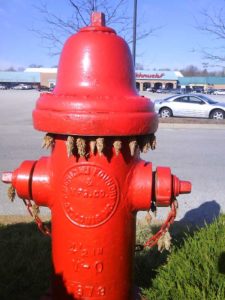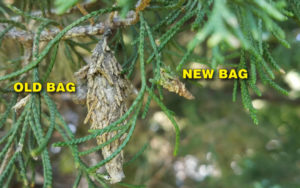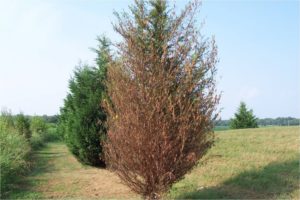It is the time of the summer season where everyone is on the lookout for Butterflies, Moths, and their cocoons. If you are lucky enough you may even get the unforgettable opportunity to watch one emerge from it’s cocoon fully transformed spreading its wings, while you are left to marvel at the fluttering colors before you!
But, that sense of wonder doesn’t translate when a black headed caterpillar emerges from its bag! Bad news, what you have are likely bagworms! This time of year bagworms are busy eating your landscape; as their bags dance like holiday ornaments dangling from the limbs of trees & shrubs. They prefer evergreen hosts but can also be found on London Planetrees, Witch Hazels, Serviceberres, basically over 120 different types of trees & shrubs could be a potential host under the right set of circumstances.
You probably won’t see the bagworms themselves, but notice their homes (typically 2″ long) dangling from the tips of your trees. These insects, which are native to North America, use their silk and pieces of the tree to create a camouflaged, cocoon-looking bag, which in the fall they fill with up to 1,000 eggs! The eggs hatch in late spring or early summer, and emerge as tiny black larvae no larger than a pinhead. The caterpillars can use the silt that they produce to parachute to nearby trees and begin building a new home/bag) there. The pests hang out in their bags until late summer or early fall when the adult males emerge to mate.
On evergreens, they’ll eat lots of the buds and foliage, causing branch tips to turn brown and then die. But if they eat more than 30 percent of the tree, the tree may die. Most people are not going to notice the bagworms until substantial damage has been caused. They are most threatening to evergreens. It is important to monitor your trees this time of year for their presence.
“How do I get rid of them”, you ask? The easiest way to remove bagworms (when there is a small infestation) is to cut off the bags by hand and destroy them. Be sure to cut off all their silk, too, because that could strangle (and kill) twigs later. It is important to get every single one because each bag has the potential to hold 1,000 new bagworms which will hatch the following May.
If the infestation is acute, or out of reach, or you’re just easily grossed out or there are too many bagworms for you to remove, a certified applicator can apply a treatment to the tree when the larvae emerge in late spring or early summer. Timing is everything when treating this pest. A foliar application when they are actively feeding is best. Oftentimes a systemic treatment takes too long to be effective. The damage only compounds this problem. Timing is everything when treating for pests & diseases and there is no need to waste money on ineffective treatments.







